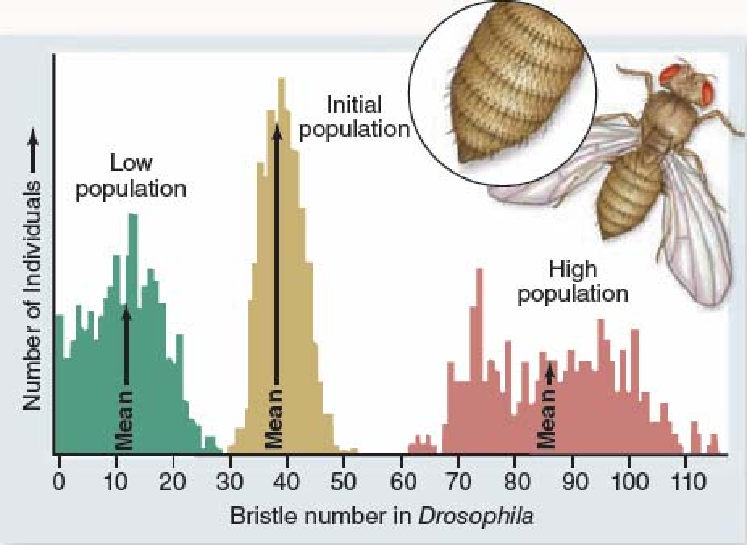Restriction digestion of satellite DNA that has one restriction site in each repeat generates
a. many evenly spaced bands.
b. four distinct bands, two from each parent.
c. a single sharp band.
d. no visible bands.
e. a general smear.
Ans: c
You might also like to view...
The figure below shows results of bristle number in Drosophila flies after 35 generations of artificial selection. This figure suggests that

A. bristle number has evolved beyond the original range of phenotypic variation for this trait.
B. after 35 generations of selection, populations no longer exhibit variation in bristle number.
C. natural selection cannot lead to large phenotypic changes.
D. at the end of the experiment, "high population" flies were unable to interbreed with "low population" flies.
Clarify Question
What is the key concept addressed by the question?
What type of thinking is required?
Gather Content
What do you already know about artificial selection? What other information is related to the question?
Choose Answer
Given what you now know, what information is most likely to produce the correct answer?
Reflect on Process
Did your problem-solving process lead you to the correct answer? If not, where did the process break down or lead you astray? How can you revise your approach to produce a more desirable result?
The use of bacteriophages to map bacterial genes is called ___________
A. generalized transduction B. cotransduction C. transformation D. conjugation E. none of the answers are correct
Which of the following statements is TRUE of small effector molecules?
A. Small effector molecules cause a conformational change in a regulatory protein. B. Small effector molecules can prevent a repressor from binding a gene region. C. Small effector molecules regulate gene transcription. D. Small effector molecules regulate gene transcription by binding a regulatory protein. E. All of the choices are correct.
Reptiles are __________ (cold-blooded animals) with scales. Fill in the blank(s) with the appropriate word(s)